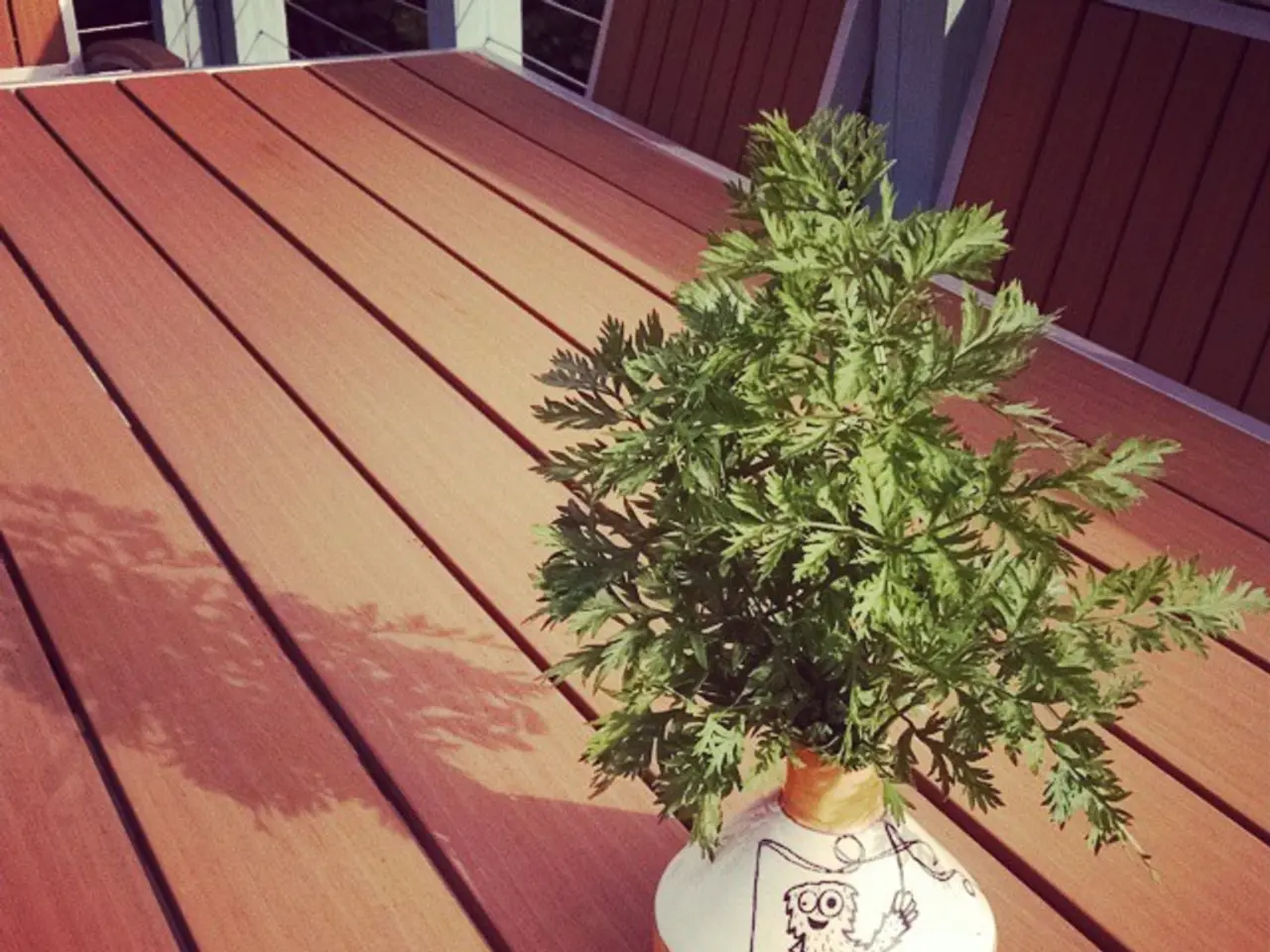Efficient watering method halts mold growth in houseplants' soil, also deters pests and averts root rot.
Preventing Mold in Houseplants with Bottom Watering
Mold growth in houseplant soil can be a common issue, but it's a problem that can be effectively addressed through a simple technique called bottom watering.
Before switching to this method, the author of this article noticed mold on the surface of their houseplant soil. Overwatering, which can compact the soil and reduce airflow, was likely contributing to this mold growth.
Bottom watering, however, helps prevent such issues. Instead of watering from above, water is poured into the saucer beneath the plant pot, allowing moisture to be absorbed gradually by the roots. This method helps avoid overwatering, where excess water can saturate the soil surface and create an ideal environment for mold to grow.
By bottom watering, plants take up only the water they need, and any excess water can be discarded, preventing prolonged soil wetness that encourages mold and root rot. Additionally, because the soil surface stays drier, it improves airflow and reduces compaction, further discouraging mold and fungus development.
This technique is especially beneficial in humid environments like bathrooms, where humidity can exacerbate mold issues. To improve airflow even more, consider opening windows in humid parts of the home.
The easiest way to bottom water is by using a planter with drainage holes and a saucer, and a narrow spout houseplant watering can. A narrow spout can help direct water directly into the saucer, reducing the chances of overwatering the plant's leaves.
If your planter doesn't have drainage holes, you can soak the plant in a sink or container full of water. Just make sure to let the excess water drain away after soaking.
Monitoring soil moisture before watering is also crucial. A soil moisture meter can help you check the moisture level of the soil before watering again.
In severe mold cases, repotting the houseplants with fresh houseplant potting mix may be necessary. Also, don't place houseplants too close together to reduce humidity among them.
By controlling watering precision and preventing the persistently moist conditions that foster mold, bottom watering creates a healthier, mold-resistant environment for houseplants. This simple technique can make a big difference in keeping your houseplants looking healthy and thriving.
[1] The Spruce, "How to Water Houseplants: The Ultimate Guide", https://www.thespruce.com/how-to-water-houseplants-1807815 [4] The Spruce, "How to Water Houseplants: The Ultimate Guide", https://www.thespruce.com/how-to-water-houseplants-1807815
- Incorporating succulents into a home-and-garden lifestyle can be advantageous, as they thrive well with the bottom watering technique, which minimizes mold growth and creates a mold-resistant environment.
- For those who enjoy gardening, adopting the lifestyle of home-and-garden enthusiasts can involve strategies like bottom watering, which not only benefits succulents but also aids in the overall health of various houseplants by reducing mold and promoting a dry soil surface that discourages fungus development.




